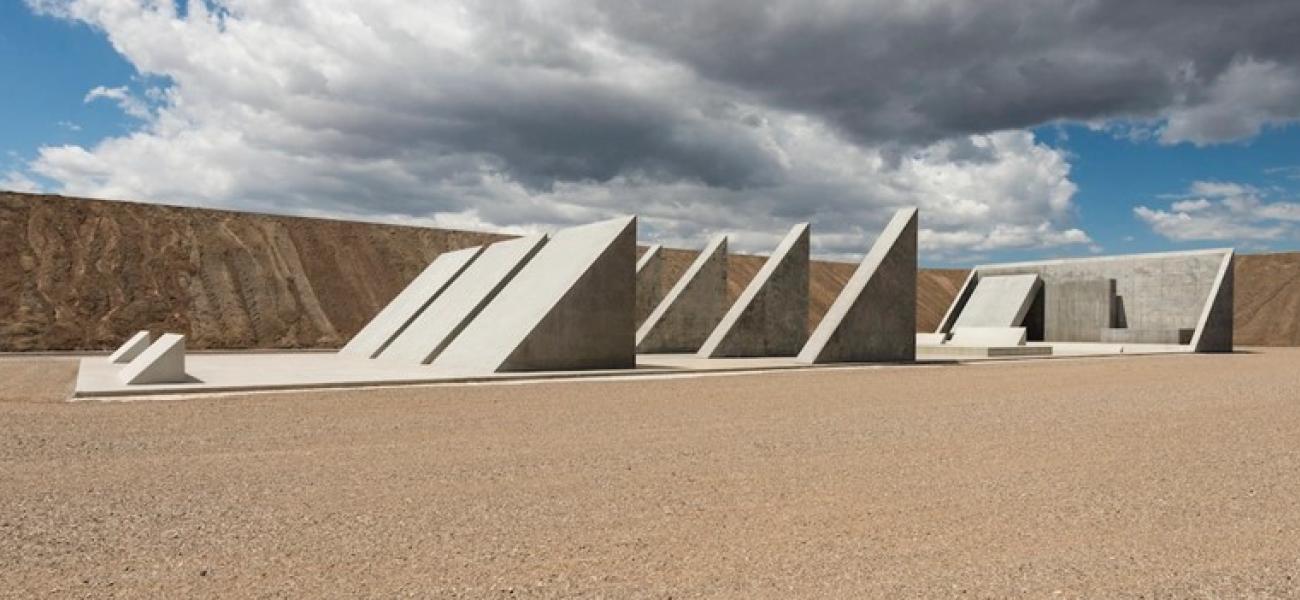Michael Heizer’s ‘City,’ Explained: Why the World Has Its Eyes on One of the Biggest Artworks of All Time

Michael Heizer, City, 1970–2022. PHOTO BEN BLACKWELL/©MICHAEL HEIZER AND TRIPLE AUGHT FOUNDATION
BY ALEX GREENBERGER August 31, 2022 9:30am
About 50 years after Michael Heizer started work on it, the artist’s vast installation City is ready to begin welcoming its first visitors. Starting this Friday, a very select few will be able to make the pilgrimage to Heizer’s monumental sculpture in the Nevada desert, marking the first time that the general public will see the work in its fully completed state.
But what is City, anyway, and how can you view it in person? Below is your guide to Heizer and his newest creation.
What, exactly, is City?
At more than a mile and a half long, City is one of the largest artworks in the world. Heizer has been at work on it since the ’70s, and it’s intended to resemble a massive urban complex. But the city that Heizer has envisioned looks nothing like current urban megalopolises. It is instead meant to recall prehistoric ones, with gigantic abstract forms composed of sand, cement, and other materials that emerge from the Nevada desert.
Sounds great. How do I see it?
Here’s where things get tricky: City, unlike other many works by Heizer, is neither easy to get to, nor affordable to view. You can request to visit City by emailing the Triple Aught Foundation, which manages the artwork. Right now, you can request to book reservations to see the work between September 2 and November 1 of this year, although more details are expected to be announced soon.
Seems easy enough, right? Well, not quite.
The New York Times reported that six reservations will be accommodated daily, and that each one costs $150. Residents in the nearby Lincoln, Nye, and White Plain Counties can go for free, although that deal only applies to around 60,000 people. If you are one of the lucky individuals to get a chance to go, expect a good amount of walking—there are reportedly no benches.
Where is City?
That, to some degree, is a secret. According to the Times, visitors to City get picked up in the “nearish” town of Alamo, Nevada. They’re then deposited at the installation, which they’re allowed to peruse for a few hours. (There’s no gift shop, so no need to budget time for that.) Beyond that, official word on the location of Heizer’s biggest artwork is scant. But there have been some unofficial details released about City, courtesy of none other than Google Maps. On Twitter, the eagle-eyed museum worker Bryan Hilley noted that, for a short period, Google Maps had listed City at the coordinates 38°01’59.5″N 115°26’37.0″W. Then, rather mysteriously, the official listing for City vanished altogether. If you plug those coordinates into Google Maps, you can still see, via satellite view, Heizer’s form set in the desert, where it appears like a geographical anomaly.
Who is Michael Heizer, and what’s his deal?
You may by now be wondering what would possess someone to build a mile-and-a-half-long installation, and Heizer has been working on a grand scale for years, creating some of the essential pieces of the Land art movement of the ’70s. Land art, sometimes known as earthworks, grew out of the Conceptual and Minimalist art movements, and marked an attempt by its purveyors to completely fuse art with nature. As with the works of his late colleagues Robert Smithson, Walter De Maria, and Nancy Holt, Heizer’s art often takes the shape of minimalist forms that appear in remote and often arid settings.
Sometimes Heizer’s work has also appeared in museums and galleries. Dia:Beacon in New York, for example, owns the installation North, East, South, West (1967/2002), which features four holes that were bored into the gallery floor, two of which are precisely cut squares. But Heizer remains better-known for his permanent interventions in the American landscape, among them Double Negative (1969), which involved the digging of a trench into the Moapa Valley, near Overton, Nevada.
Heizer has used natural materials, such as gigantic stones and sand, and crafted them using industrial means; he once referred to his practice as being akin to the “construction business.” Grandly presented and often epic in scope, Heizer’s projects evince a muscular, macho sensibility. They also often contain a mysterious quality, beckoning viewers to wonder just how his materials ended up where they did.
How did City come to be?
Heizer has been constructing City piece by piece over time, but because of the vast amount of funding needed to support such a big endeavor, the building process has been slow and sporadic. The first part of City was Complex One, which Heizer created between 1972 and 1976. It features a raised form with one slide slanted à la the stepped pyramid of Zoser, which Heizer saw while on a visit to Luxor, Egypt.
Complex Two followed in the ’80s and continued Heizer’s visual references to ancient cultures. So too did another element of City, 45°, 90°, 180°.
How much did City cost, and who funded it?
In total, City cost $40 million to produce. The Dia Art Foundation and the Lannan Foundation have put up a good amount of money to help realize the project, although there are many more individuals and institutions that have supported it over the years. The Triple Aught Foundation, which Heizer set up to manage the project, has helped oversee all that funding. The Los Angeles County Museum of Art, the Crystal Bridges Museum of American Art, the Museum of Modern Art, and the Glenstone Museum have been charged with continuing to ensure that City is conserved in the years to come.
This article was published on ARTnews. To visit the original post and read the rest of this article please click here.